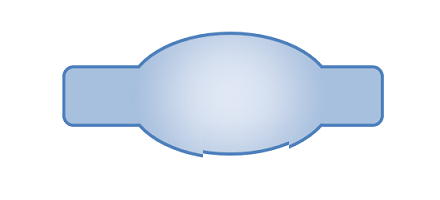3.1.2 X-ray tubes
X-ray tubes are by far the most commonly used source for x-ray excitation. There are different designs which encompass a vacuum tube on which electrons are ejected from a hot filament in the cathode assembly and accelerated under high voltage potential towards the anode.


The interactions of the electrons with the anode material (see 2.4) produce continuous breaking radiation (Bremsstrahlung) and the characteristic emission from the anode material. The produced x-rays exit the tube through a low absorbing material window.
The designs can incorporate end or side exit windows; metal, metal-ceramic or rotating anode; line or circular shaped emission beams, among other specifics features. Micro-focus tubes (small area of impact of the electrons in the anode) are advantageous for further x-ray focusing.
The last innovation in x-ray tube technology are the metal-jet-anode micro-focus X-ray tubes, in which the solid metal anode is replaced with a jet of liquid metal. The advantage of the metal-jet anode is that the maximum electron-beam power density is significantly increased, as compared to conventional tubes.
